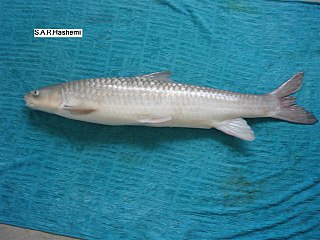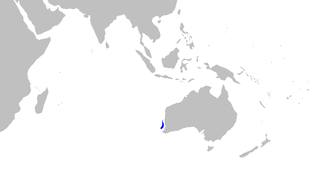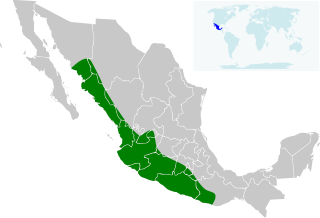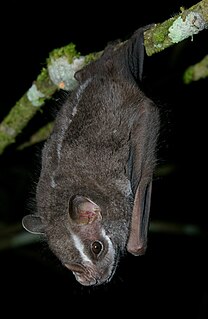
"Sardine" and "pilchard" are common names used to refer to various small, oily fish in the herring family Clupeidae. The term "sardine" was first used in English during the early 15th century and may come from the Mediterranean island of Sardinia, around which sardines were once abundant.

The Cape hare, also called desert hare, is a hare native to Africa and Arabia extending into India.

The shabout is a species of Cyprinid fish called in English, Persian or Arabic by the alternate common names shirbot and variations shabut, shabboot or shabbout, and in local languages by several other common names. It is a large freshwater carp found in the Tigris-Euphrates Basin, as well as southern Iran. It is a commercially fished species in this region. This species can grow to a length of nearly 2 metres and a weight of over 50 kg (110 lb).

The hairy big-eyed bat is a bat species from South and Central America.

The striped hairy-nosed bat is a bat species from South and Central America. It is found in Brazil, Colombia, Ecuador, French Guiana, Guyana, Suriname and Venezuela.

The pale-faced bat is a bat species from South and Central America.

The ginger carpetshark is a species of carpetshark of the family Parascylliidae endemic to the waters off western Australia. It is a small fish at only 78.1 cm (2.56 ft) TL in length in females and harmless to humans. Its depth range is 204–245 m (669–804 ft) on the upper continental shelf. It is known from only three specimens, and so biological and population data are lacking. It is likely not under threat due to its depth range, but its limited range may make it vulnerable to fishing. Reproduction is oviparous and embryos feed solely on yolk.

The Arabian pipistrelle is a species of vesper bat in the family Vespertilionidae. It is found only in Oman.

The Arabian toad is a species of toad in the family Bufonidae. It is found in Oman, Saudi Arabia, the United Arab Emirates, and Yemen. Its natural habitats are subtropical or tropical rivers, intermittent rivers, freshwater springs, rural gardens, urban areas, ponds and irrigated land.
The Dhofar toad, Bufo dhufarensis, or Duttaphrynus dhufarensis according to some authorities, is a species of toad in the family Bufonidae. It is also known as the Oman toad. Found in Oman, Saudi Arabia, United Arab Emirates, and Yemen, its natural habitats are subtropical or tropical dry shrubland, rivers, intermittent rivers, freshwater springs, rural gardens, urban areas, ponds, and irrigated land.

The fraternal fruit-eating bat is a species of bat in the family Phyllostomidae. It is found in Ecuador and Peru.

The hairy fruit-eating bat is a species of bat in the family Phyllostomidae. It is endemic to Mexico. It is threatened by habitat loss.

Salvin's big-eyed bat is a species of bat in the family Phyllostomidae. It is found in Bolivia, Colombia, Costa Rica, Ecuador, El Salvador, Guatemala, Honduras, Mexico, Panama, Peru, and Venezuela.

The greater long-tailed bat is a species of bat in the family Phyllostomidae. It is found in Colombia and Ecuador. It is threatened by habitat loss.

The western nectar bat is a species of bat in the family Phyllostomidae. It is found in Ecuador and Peru. It is threatened by habitat loss.

The greater broad-nosed bat is a species of bat in the family Phyllostomidae. It is found in Bolivia, Colombia, Costa Rica, Ecuador, Panama, Peru, and Venezuela.
Agamodon arabicus is a species of reptiles in the family Trogonophidae. It is found in the southern part of the Arabian peninsula in Yemen. The population is unknown as it has only been recorded in the past 100 years. The threats are also unknown but does not seem to be threatened by Yemen's small-scale agriculture. Not much is known about this species hence the data deficient status.

Bat Conservation International (BCI) is an international non-governmental organization working to conserve the world's bats and their habitats through conservation, education and research efforts.
The Arabian short-fingered gecko or Arabian sand gecko is a gecko of the genus Trigonodactylus.
Acanthodactylus arabicus or the Arabian fringe-fingered lizard is a species of lizards found in south Yemen. It is a common species inhabiting deserts and dry shrublands with sandy substrates. It is oviparous.


















